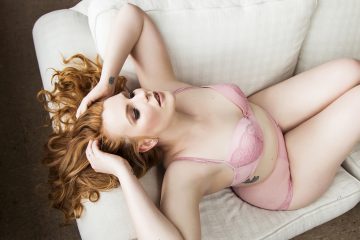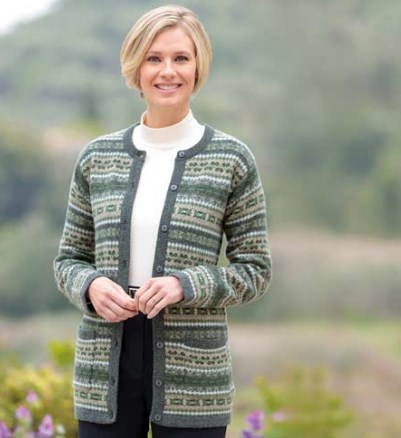The Beginner's Overview to Product Photography
If a picture deserves a thousand words, a spectacular product picture deserves a thousand website visits. Although I do not have data to back up that declaration (yet), product photography can be very important to your ecommerce web site method.
To reach your target audience participants that like purchasing online, you also require to give your target market clear, captivating pictures of your items.

However product photography isn't as straightforward as directing as well as shooting. Even one of the most basic products need the proper devices, lights, and room to generate attractive photos that offer consumers right from the acquisition web page.
6 Product Photography Tips ( and also Examples) for Taking Pictures That Sell
Right here are the ideas, examples, and materials you'll require to efficiently photo as well as market your products in a way that makes your site visitors and also potential customers wish to convert.
1. Don't hesitate to use your smartphone's electronic camera.
This is the component where I'm supposed to convince you to purchase a premium, 50-megapixel (MP) camera with a 100-millimeter screw-on lens. Yet I'm not mosting likely to do that.
If you currently possess a electronic camera that fits this description, capitalize on it. However, for numerous types of products, it's entirely acceptable to shoot product photos on a mobile phone.
More recent smart devices boast powerful camera lenses and also settings that permit you to optimize your shots for the different types of light as well as environments you may shoot in.
If you require a lot more convincing, just look into Apple's Shot On An iPhone campaign and the pictures that have actually arised from it over the years such as this one:
2. Shoot from a tripod for photo uniformity.
Prior to clarifying tripods, I'm bound to start with a cardinal rule: Don't prop your phone versus something sturdy to aim your lens toward the topic.
It's simply as well easy for this makeshift configuration to move about during the shoot and trigger variances in your images' appearance. If you rest your electronic camera on, claim, a pile of books, just make certain this arrangement doesn't alter over the course of the shoot.
There's no damage in holding your electronic camera yourself when shooting just a couple of product images for your ecommerce site. However as your company grows, as well as you take much more pictures of more items, it can be challenging to standardize the product's orientation in each photo when shooting handheld.
To ensure consistency throughout your products, you'll need a tripod. And fortunately, buying one isn't always the big, industrial-sized investment it utilized to be.
Here are 2 kinds of tripods to consider.
Conventional vs. Adaptable
This is a tradition tripod-- there are standard tripods available for both cams and also mobile phones.
A flexible tripod can be controlled in a number of means. You can flex its legs as well as position it on different surface areas to obtain the angle you need.
Mobile Grasp
There's typically a screw on the top of your tripod which affixes to your electronic camera to hold it in position. The underside of many professional-grade cameras has a screw hole just for this objective, but smartphones can make use of the adhering to adapter:
The adapter grips the sides of your smart device and can screw right into either sort of tripod, allowing you to run the camera controls with the phone screen encountering exterior as well as toward you.
As soon as you identify which mount you'll need, set it up in front of your product, and also take into consideration placing three items of tape on the ground to mark where you wish to keep each leg of your tripod over the course of the shoot.
3. Pick all-natural light or artificial light.
Never undervalue how specific kinds of light can enhance (or impede) your product photography. Remember, customers obtain the very best take a look at an thing face to face, where they can see whatever they require to prior to purchasing. The appropriate illumination setup aids you expose those essential decision-making product functions when all site visitors have to go on is a photo.
A single lights setup may not help every product-- a lights setup that works for some products might compromise the look of others.
There are two types of light you can select as your primary light source: natural as well as synthetic light.
Natural Light
All-natural light refers to sunlight-- straightforward as that. It's also referred to as "soft light" because the sun casts a larger, softer series of light than, say, a lamp radiating directly on the product. Ecommerce product shots grow in all-natural light if:
The product is shot outside or implied to be made use of outside.
The product is used by, worn on, or shot with a person (people often tend to look far better in all-natural light).
You're trying to stress the product's surroundings, as opposed to certain attributes of the product.
Below's an instance of a shot making use of all-natural light:
Fabricated Light
Man-made light consists of candles, fire, as well as a lot more commonly, light bulbs. It's also referred to as "hard light" since it generates a smaller sized however extra concentrated light surface area. This kind of light accommodates items with physical details that need to be highlighted to excite an on-line customer.
As a basic regulation, stick to simply one kind of light per photo-- all-natural or man-made. Including all-natural light to an artificially lit photo can soften a product that's meant to festinate, as well as including man-made light to a naturally lit photo can sharpen a product that's implied to look soft. You don't wish to get in your very own way.
4. Fill or jump your light to soften darkness.
Whether you use natural light or artificial light, you'll need to reduce the darkness that any kind of prospective tough light casts on the contrary end of a product.
There are 3 methods to do this:
Load Light
Consist of an additional, less-intense light source to supplement your primary light. This additional light is called your fill light as well as is used as a counterbalance to soften the natural shadow your major light creates behind an object.
To do this, place your fill light opposite your main light so your product rests in between both source of lights.
Flashbulb Bounce Card
A bounce card, or reflector card, is a small card that " mirrors" or " jumps" the primary light back onto the surface underneath your product to decrease darkness.
Some bounce cards attach to the flashbulb of a specialist cam lens to diffuse the light from the cam's flash. This card sprays a softer light onto the topic from over your collection-- as opposed to right at it-- so you do not have long darkness trail behind the item you're shooting.

Standalone Bounce Card
If you're firing from a smart device, a flashbulb bounce card isn't an choice, considering that you do not have a physical flash you can attach it to. Rather, make your own standalone bounce card positioned contrary your major light.
For novices to product photography, this bounce card can properly replace your fill light, which counters the difficult light from the electronic camera flash or lamp that's dealing with toward the front of your product.
5. Use a sweep or portrait setting to stress the product.
There isn't one best way to position your product, lights, as well as jump cards-- they can alter dramatically depending upon your history. But don't pick a history based on what's simplest to produce. Histories must appear like just how you want your buyers to regard your product when seeing it online.
Think about first whether you 'd like a white background or a more dynamic, real-world history. There's an simple means to accomplish every one.
White Background: Move
For white histories, it's not as easy as establishing a table versus white drywall. Also mobile phone electronic cameras can get little imperfections on a white wall surface that you would not see with the nude eye. To record a best white background without corners or acnes, make use of a sweep.
A sweep is a big flexible sheet of paper, whose lower serve as the surface under your product and then curves up into a white wall surface behind the product.
On video camera, the move's contour is undetectable, stressing key product details and permitting the thing to have every one of a web site visitor's interest.
Real-World Background: Picture Setting
Dynamic, real-world histories are very attractive when shooting items that have a particular usage or are being modeled by a person-- as you saw in the picture of the briefcase previously in this guide.
However, it's simple for a real-world background to steal the emphasis of the photo, making it vague which item in the photo you're actually offering.
Offer your product depth and emphasis with https://postheaven.net/c7nzkpa204/h2-the-beginnerand-39-s-overview-to-product-photography-h2-if-a-image-is-worth picture setting, a image setting on most specialist electronic cameras, as well as also readily available on many new smartphones. This setup obscures the history so the context of the product is clear yet not completing versus the product itself.
Below is a extremely incredible photo of a HubSpot pen absorbed picture setting on a Google Pixel 2 (I took this picture myself). You can inform the pen rests on a workdesk with a computer behind it, however the pen is still the focal point for audiences:
6. Shoot a variety of images.
My last ecommerce photography pointer to you is to not stop at one photo per product. Just as your clients look, hold, make use of, and also also try on goods in a shop, your website must shoot a range of pictures to replicate this very experience.
If you're shooting clothes, for instance, capture the garment of clothing alone-- that is, spread out on a white surface-- in addition to on a mannequin whose color contrasts the color of the product.
Then, for added pictures, have the garments modeled on a person, allowing you to take photos of the product from the individual's different presents as well as angles.
Product Photography Set-Up
Next, let's summarize what we just received-- below's a checklist of fast product photography set-up suggestions that you can refer to and also share on your team:
• Decide on a electronic camera-- whether that means utilizing your smartphone.
• Get a tripod that benefits your video camera of selection.

• Pick all-natural or synthetic lighting-- think of which choice is best for your product and also atmosphere.
• Determine whether you'll fill or jump light.
• Select move or portrait mode.
• Take a number of various photos to provide your viewers range.
Get going With Your Product Photography
Do not feel required to purchase every suggestion as well as piece of equipment at once. Apply these product photography tips slowly to see what makes your store look one of the most presentable, and also transform your strategy as your photography chops improve.